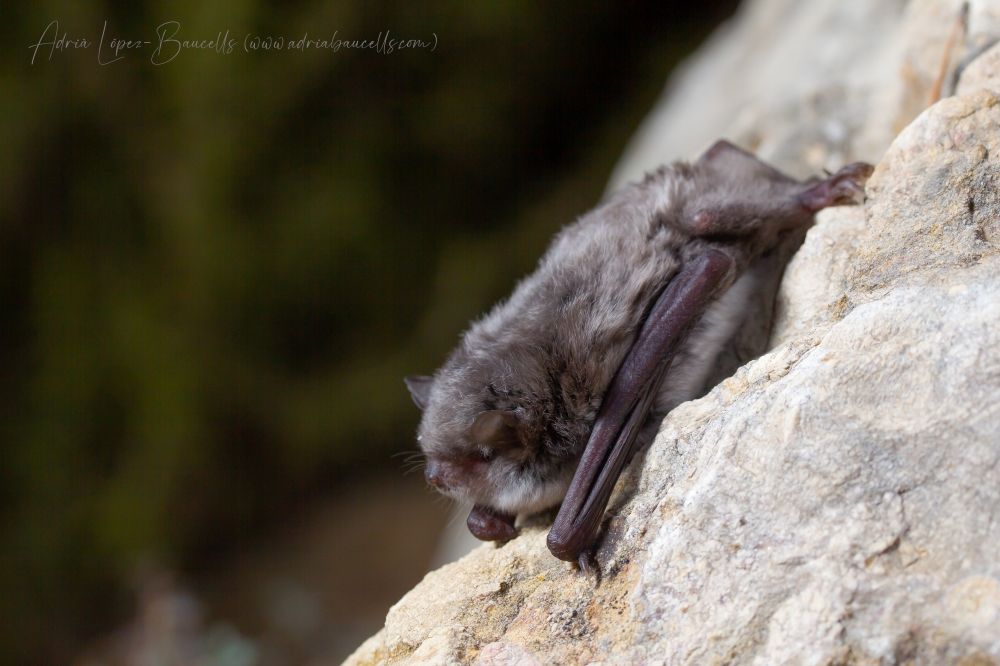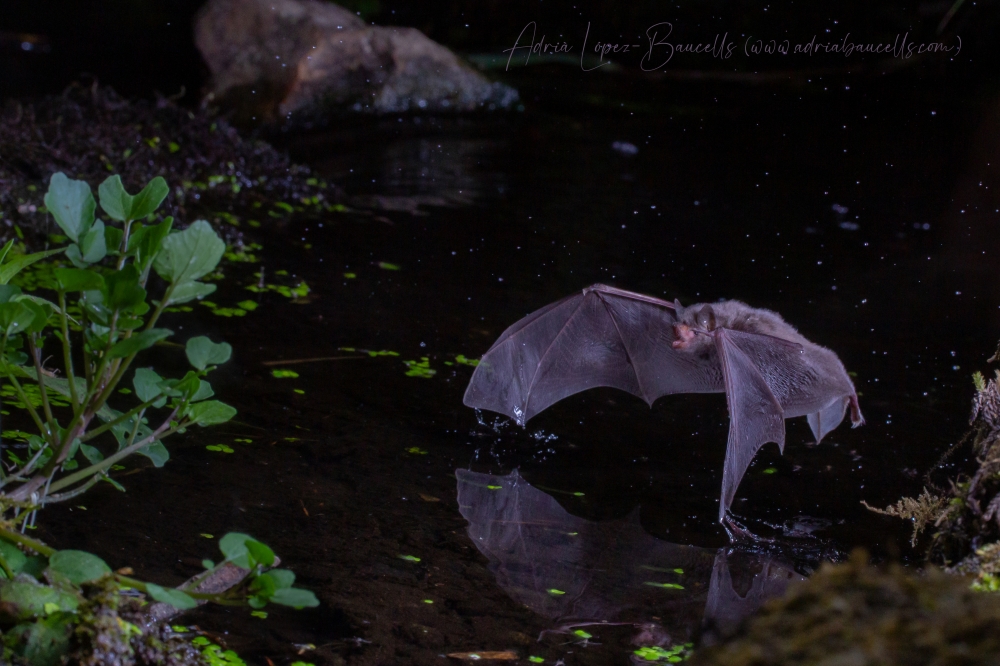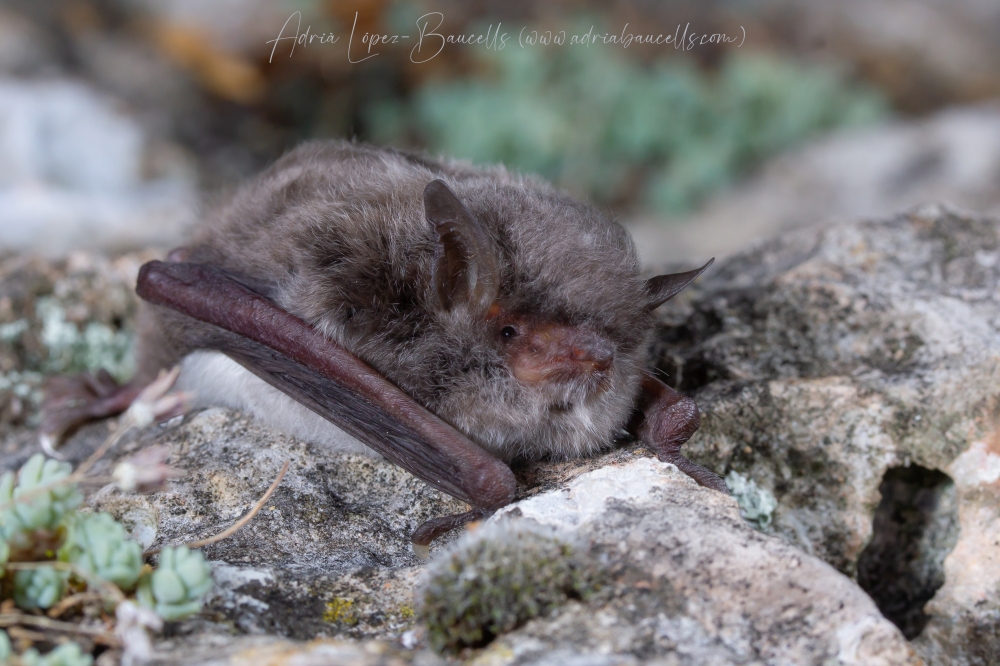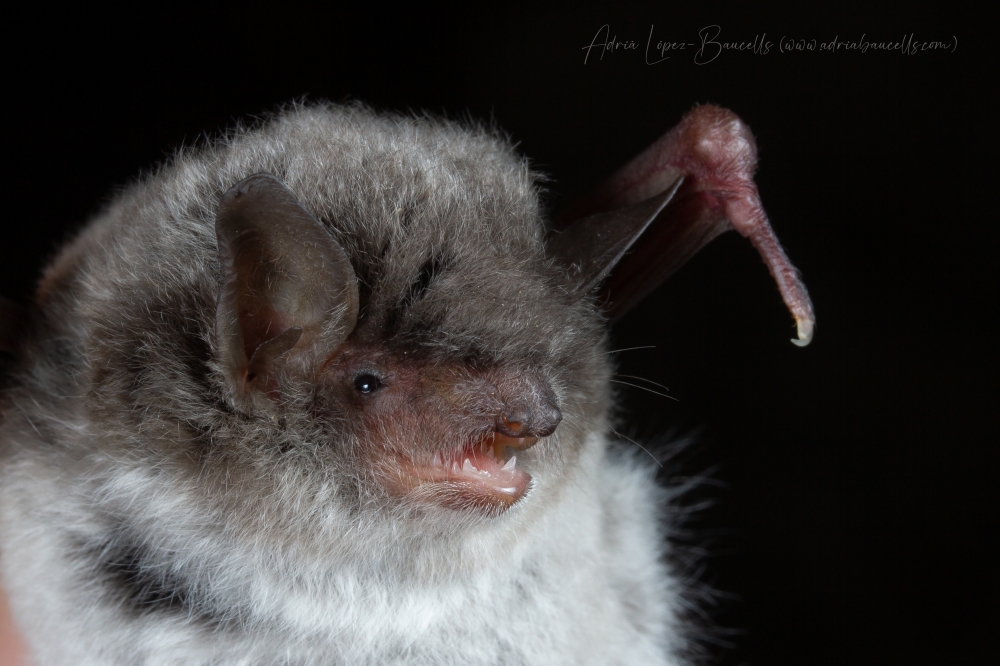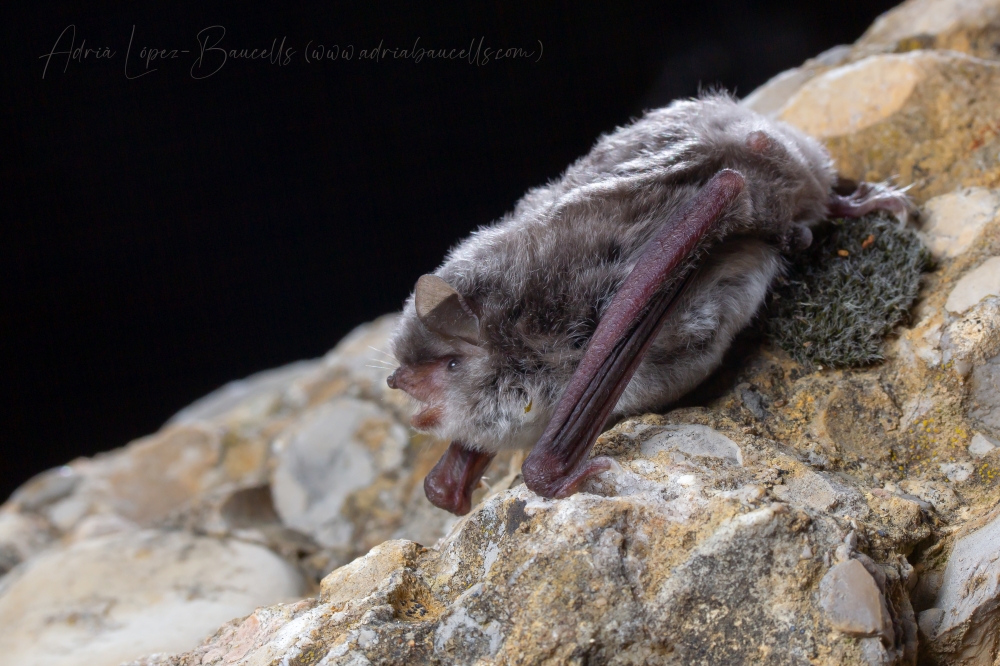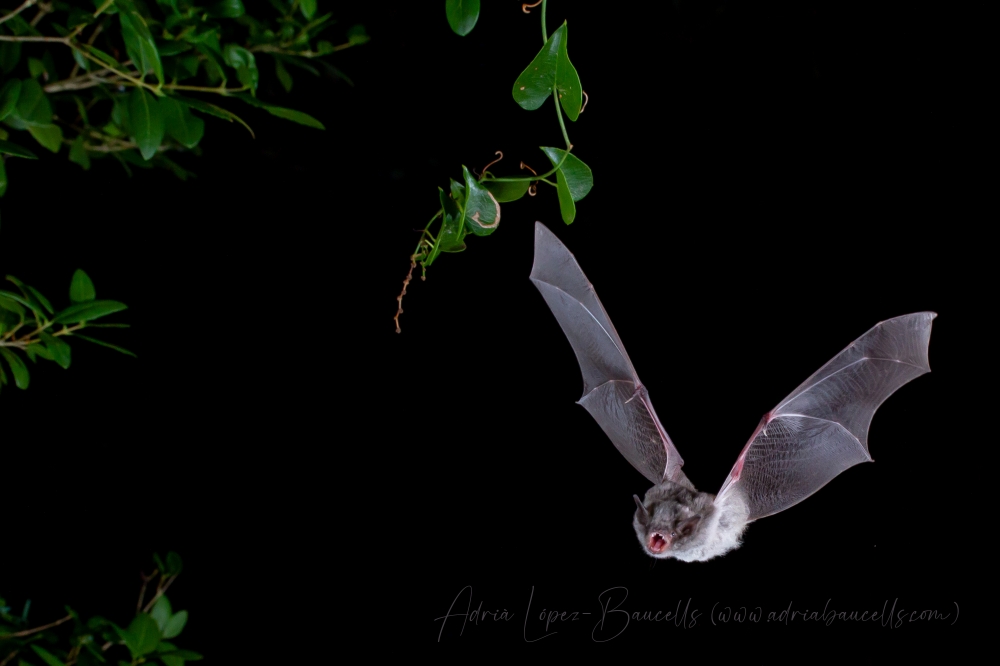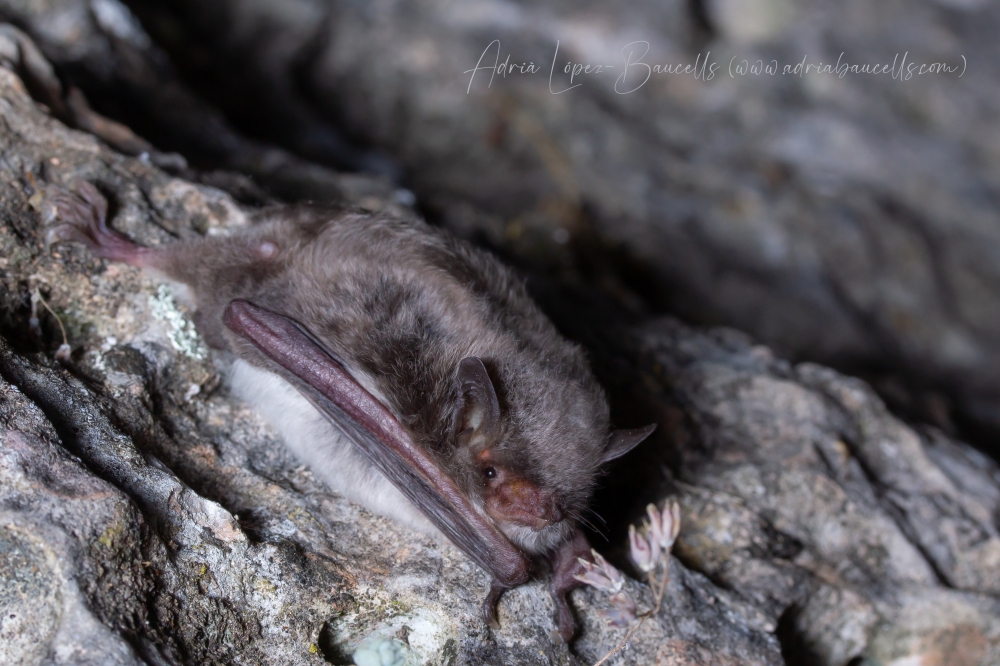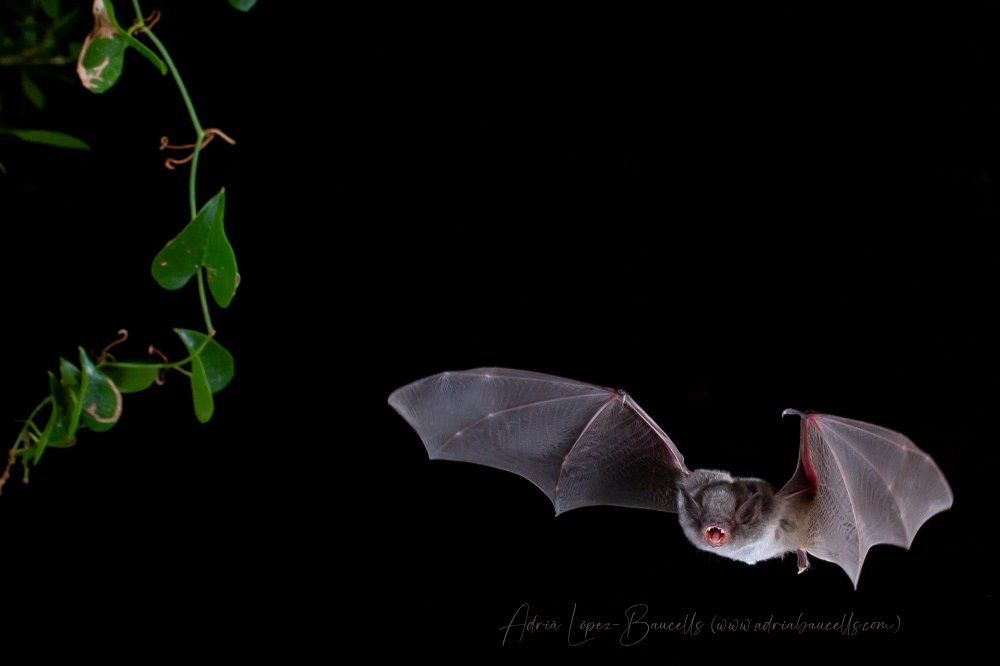Long-fingered bat
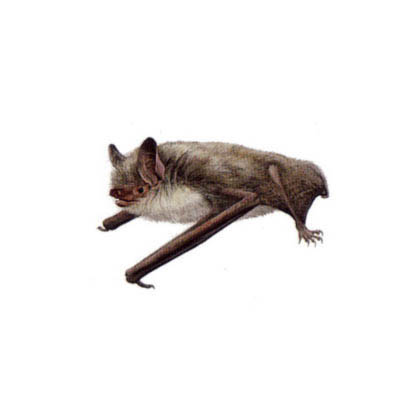
Myotis capaccinii (Bonaparte, 1837)
Vespertilionidae
Vulnerable
| Other names | |
|---|---|
| Catalan | Rater de peus grans |
| Spanish | Murciélago ratonero patudo |
| English | Long-fingered bat |
| French | Murin de Capaccini |
| Basque | Saguzar hatzluze |
| Galician | Morcego de pés grandes |
Description
It is a medium-sized trawling bat, midway between the Daubenton's bat (Myotis daubentonii) and the pond bat (Myotis dasycneme), with a body length of 43-54 mm, a wingspan of about 230-260 mm, a forearm length of 38-44 mm, and a weight of 7-10 g. The feet are characteristically large, measuring between 10-13 mm, and are covered in sensitive fur. The fur is gray or grayish-brown, being light gray on the ventral side. Juveniles have a grayish color. The fur extends to the uropatagium and covers the tibia, which makes it easy to distinguish from the Daubenton's bat. The ears and wing membranes are brownish-gray. The tragus, characteristic of the Myotis genus, is pointed, relatively short, and has a slight "S" shape.
Fotografies
Distribution
It is a predominantly Mediterranean species, venturing further inland in some basins of large rivers. Like other aquatic bats, this species is strongly associated with Mediterranean river ecosystems. It is found along the Mediterranean coast of all countries in the northern Mediterranean region, and its distribution extends inland only to the Balkan Peninsula. It is also present in North Africa (Morocco, Algeria, and Tunisia), along the coast from Turkey to Israel, and its eastern limit reaches Iran, Iraq, and Uzbekistan.
Roosts and phenology
It is exclusively a cave-dwelling species, and only very occasionally can solitary individuals be found in rock crevices or buildings. Roosts can include between 30 and 500 individuals, although the largest known roost is in Bulgaria with a maximum of 50,000 individuals in winter. Births occur in late April and May. At 18 days, the juveniles already start flying within the roost, and shortly after, they will abandon it.
Seventy percent of females mate and give birth in their first year of life, while males do not mate until the second autumn. Mating occurs in late September and early October in caves that will be used as hibernation roosts. It is considered a non-migratory species but makes short displacements between breeding and hibernation roosts, with a maximum of 100-150 km. It seems that it conducts seasonal altitudinal This species has been recorded crossing the sea between the islands of Mallorca and Menorca.
Habitat and diet
Its habitat is primarily determined by the presence of rivers and water bodies, preferably with well-preserved riparian forests, as well as in limestone areas with numerous caves and underground shelters. Its habitat is associated with the basins of large Mediterranean rivers such as the Rhône, Ebro, Po, or Danube, as well as large lakes and small rivers in karstic mountainous areas. It can be found from sea level up to 1,200 meters.
Its diet consists mainly of diptera, trichoptera, as well as beetles and hymenoptera. In the Iberian Peninsula, fish constitute a significant part of the diet, and in Israel, remains of fish have been found in 12% of the species' droppings. Similar to the Daubenton's bat, it hunts over water bodies by flying in circles about 10-25 cm above the surface. The prey is captured with its large feet and the uropatagium. They typically hunt within about 10 km of their roost, although in Greece, displacements of up to 26 km have been recorded. Up to 10 individuals can gather in a single water body, and some solitary individuals may hunt in forests near the water body.
Echolocation
Its echolocation is characteristic of the Myotis genus. They usually emit modulated calls with a duration of about 3-7 ms, starting at 70-90 kHz and ending near 27-39 kHz. The frequency of maximum intensity is between 40-50 kHz. Their calls typically have a slight "S" shape. Like many members of the Myotis genus, it is acoustically classified as Myotis 50.
Trends
| General trend | Uncertain |
|---|---|
| Protocol | ChiroRoosts |
| Period | Migration |
| Geographic scope | Catalonia |
| Number of localities studied | 4 |
| Annual change | 1.4 % |
| Method | TRIM |
| Analysis execution date | 01/09/2024 |
| General trend | Uncertain |
|---|---|
| Protocol | ChiroRoosts |
| Period | Reproduction |
| Geographic scope | Catalonia |
| Number of localities studied | 8 |
| Annual change | 0.9 % |
| Method | TRIM |
| Analysis execution date | 01/09/2024 |
Status
According to the IUCN Red List, this species is classified as Vulnerable, with a negative population trend and as EN B2ab (Endangered with an estimated occupancy area less than 500 km2) according to the Red Book of Spain (2006). This species is protected by national laws in various countries, as well as by the Eurobats Agreement, the Bern Convention, and the European Directive on Habitats and Species. The long-fingered bat is severely threatened and in sharp decline across its entire distribution area. It is extinct in Switzerland and northern Italy, and in France and Spain, there are few breeding colonies remaining. In Bulgaria and Greece, there are still relatively large populations, although many breeding roosts have been abandoned due to the increased use of pesticides. The main threats to this species include habitat destruction, river pollution and pesticide use, and disturbance and over-visitation in caves.
